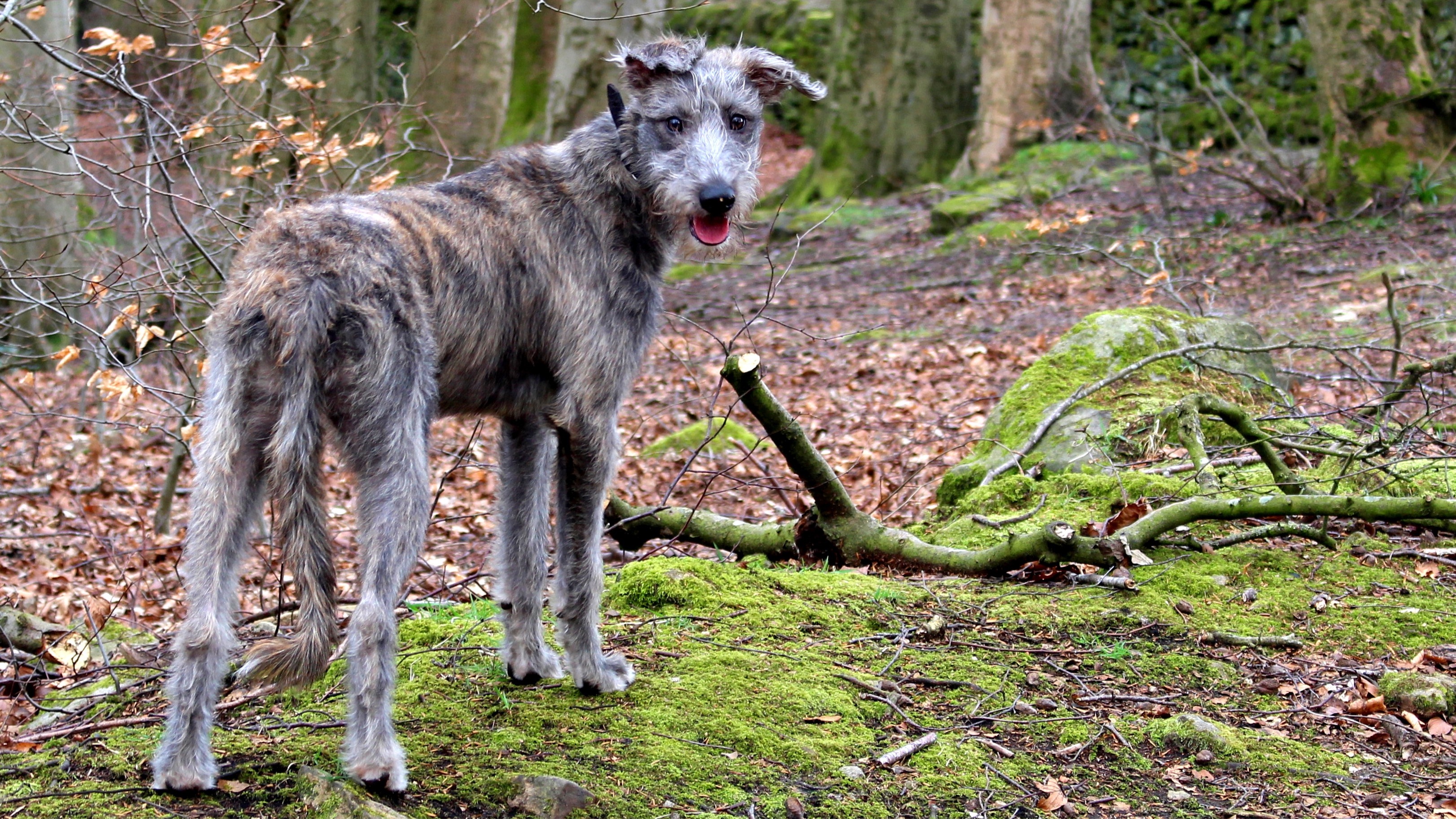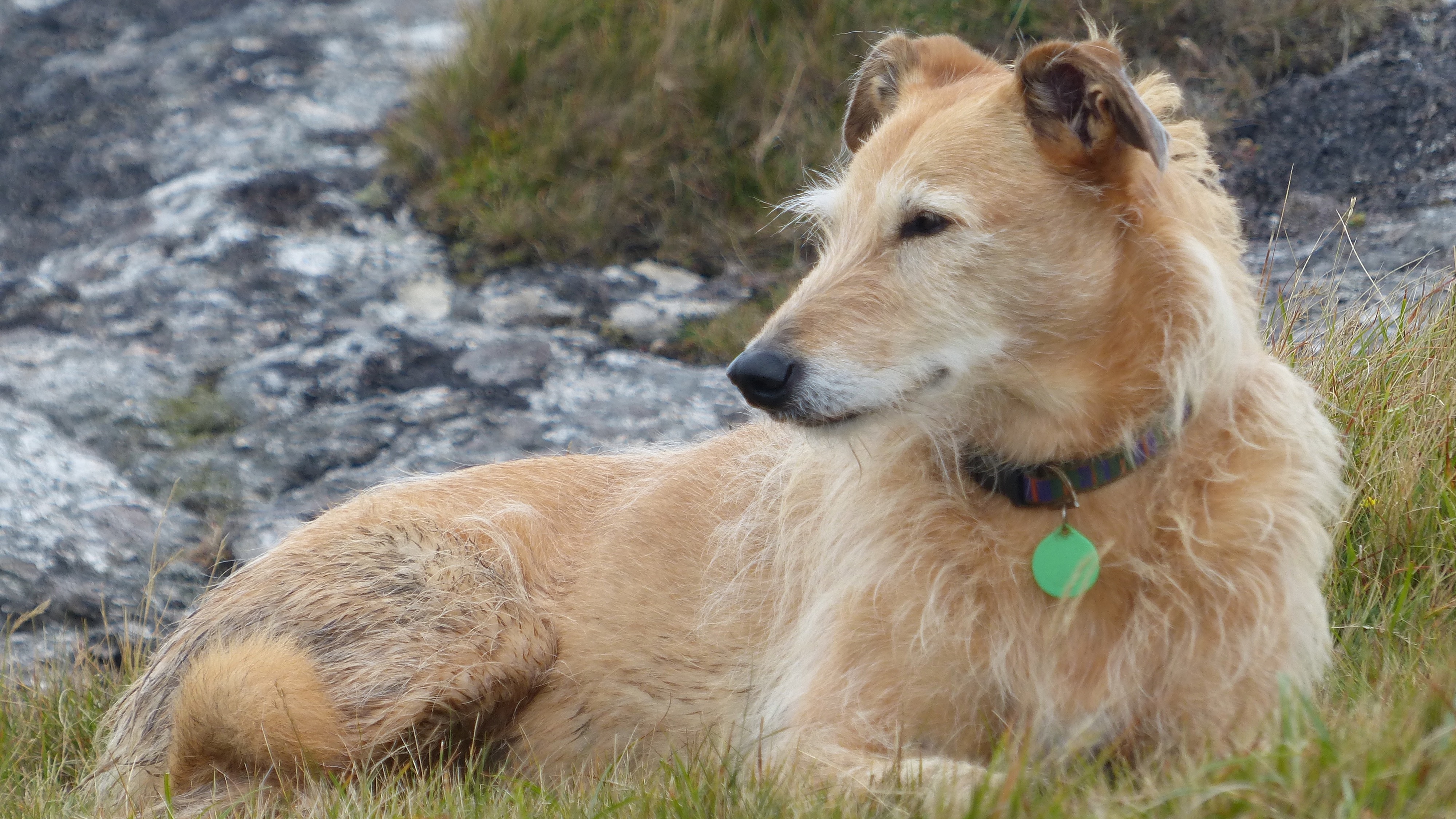
I brought my rehomed lurcher, Dixie, home a little over six months ago and since then I have been trying to figure out exactly what sort of lurcher she is. She has long, coarse hair along her spine, but no hair at all on her belly and she is a bit too large to be a Whippet, but much too small and dainty to be all Greyhound.
Finally, I gave in and invested in one of the best dog DNA tests, sending a mouth swab off to Wisdom Panel who promised to unriddle Dixie’s ancestry, potential health risks, and much more.
Dixie is 58% Greyhound, 26% Saluki, 10% Whippet, 3% Bedlington Terrier, 2% Border Collie and 1% Scottish Deerhound. While I expected some results (like the presence of Greyhound, Whippet and Collie), the other three components of her ancestry were a total surprise to me.
And that’s not all I learned, there were plenty of other things that I simply would never have known if I hadn’t tested Dixie’s DNA.
1. My dog had some breeds I didn’t expect
Ever since bringing Dixie home, I’ve been convinced she’s too smart to be 100% hound. As a hound lover, I say this very quietly, but you definitely wouldn't class them as one of the smartest dog breeds. That 2% Collie must be working really hard, because Dixie is undeniably a clever dog.
Aside from her braininess, Dixie was handed over to me as a Whippet/Greyhound mix Lurcher. This didn’t explain the long hair down her back, and she has very long legs and a delicate build that didn’t quite track with a 50/50 split between those two breeds. I was thrilled to find out the reason for these features was probably the 26% Saluki, responsible for the second-largest chunk of her genetic ancestry. Suddenly her slender head, long legs, and long mohawk made a lot more sense.
While she is almost 60% Greyhound, Dixie lacks the wide chest and wedge-shaped head of a true Greyhound, and those Saluki genes seem to have contributed to her light, long build. She does have very Greyhound-y ears though, with their signature unruly nature — she can usually be found with one up and one down.
Get the best advice, tips and top tech for your beloved Pets
If you want to learn more about my first few months with Dixie, some of the problems we faced together and how I helped her relax, 'I tried everything to help my nervous rescue dog settle in will fill you in on how our journey together started.
2. She’s clear for 30 genetic conditions
One of the main reasons I wanted to get Dixie tested was that I’d never met her parents or siblings and had no idea if she was carrying any hidden genetic conditions that might be problematic later in her life. As her third owner, I really have no idea where she’s come from, or whether there were any symptoms I should be looking out for.
Thankfully, she’s all clear for the main 30 conditions that Wisdom Panel tests for, so I can breathe easier. Now that Wisdom Panel has Dixie’s DNA on file, I do have the option to upgrade her package to a more advanced version that tests for 230 potential health problems, but I’m happy with the results I have — sometimes one of the simple ways to save money as a dog owner is to know when something's a must-have versus a nice-to-have.
3. Several genes contribute to her markings

Dixie’s brindle coat has elements of black, silver, and bronze or fawn, as well as some white patches on the underside of her body. Interestingly, her dominant gene is black, but this may also present as brindle depending on the number of genes the dog carries (Dixie has one). The black gene is responsible for her black nose, lips and paw pads.
She also carries 1 copy of a fawn gene and 1 copy for tan points (which doesn’t seem to affect her, although her white facial markings do follow the same pattern). In terms of coat patterning, she has two copies of a gene for a saddle tan and one for piebald markings, which explains the layout of her brindle vs white patches.
4. We found some distant family members
While we didn’t find anybody who shared Dixie’s parentage, we did find several distant relatives and one member of Dixie’s extended family (who shares 12% of her DNA with my dog). This dog is located fairly close to us, and with that percentage of shared DNA, they may share grandparents. It was lovely to see a picture of this other dog, possibly Dixie’s first cousin, and see the similarities and differences between them (they seem to have the same slightly confused expression).
5. She’s below her “ideal weight range”
Wisdom Panel bases its prediction of your dog’s ideal weight range on a number of genetic factors, including the expected size of the primary breeds in your dog’s DNA.
While Dixie is mostly Greyhound, with a healthy dose of Saluki, she also carries genes from smaller breeds like Whippet and Bedlington Terrier. Wisdom Panel makes clear that this is the “potential weight” of your dog based on their genes and doesn’t take into account possible malnourishment early in life or illness that may leave you with a slightly smaller dog than expected.
Dixie, for instance, is 18 kg, even though her “ideal weight range” according to Wisdom Panel is 22-34 KG. For her height, she isn’t underweight, but she is a very slight dog with a compact body, so even 22 KG would probably be considered overweight for her.
Has this piece inspired you to consider welcoming a rescue dog into your home? If so, here's eight things you need to know before getting a rescue dog that will help you decide if this is the right decision for you and your family.
Lou is an experienced writer and keen dog lover who works at PetRadar's sister site, LiveScience. When Lou isn't covering health and fitness, she's busy spending time with her family dogs or growing all kinds of veggies and flowers on her allotment.
